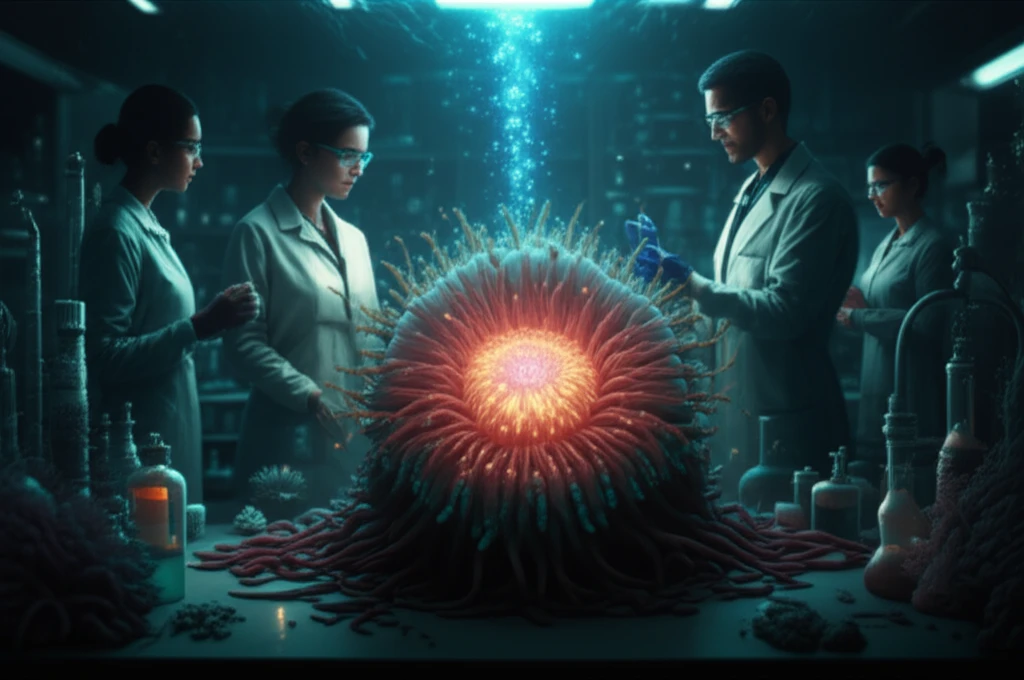
Sea Anemone Venom: The Next Frontier in Medical Breakthroughs?
"Scientists discover Gigantoxin-4, a new compound from a sea anemone, offering potential insights into drug development and understanding cellular mechanisms."
Sea anemones, often admired for their beauty in marine ecosystems, are also treasure troves of biologically active compounds. Among these, actinoporins—pore-forming toxins—have garnered attention for their unique ability to interact with cell membranes. Researchers continue to explore and uncover a new cytolysin, Gigantoxin-4, from the sea anemone Stichodactyla gigantea, offering insights into potential therapeutic applications.
In a recent study, scientists isolated and characterized Gigantoxin-4, drawing parallels to other well-known cytolysins like Cytolysin-3 and Sticholysin-1. This discovery is significant not only for its novelty but also for its potential to enhance our understanding of cellular mechanisms and pave the way for innovative drug development.
This article explores the fascinating properties of Gigantoxin-4, its purification process, and its potential implications for future medical and scientific advancements. Delve into the world of sea anemone venom and its promise for transforming healthcare.
What is Gigantoxin-4 and Why Is It Important?

Gigantoxin-4 is a newly discovered cytolysin, a type of protein that can disrupt cell membranes. It was isolated from the sea anemone Stichodactyla gigantea and shares significant similarities with other cytolysins like Cytolysin-3, RTX-A, Sticholysin-1, and Sticholysin-2. These similarities suggest a common evolutionary origin and potentially shared mechanisms of action.
- Enhance drug delivery: By understanding how it interacts with cell membranes, scientists may develop new ways to deliver drugs directly into cells.
- Develop new therapies: Its cytotoxic properties could be harnessed to target and destroy cancer cells or harmful pathogens.
- Expand scientific knowledge: Studying its structure and function can provide deeper insights into cell biology and the mechanisms of other toxins.
- Enhance drug delivery: By understanding how it interacts with cell membranes, scientists may develop new ways to deliver drugs directly into cells.
- Develop new therapies: Its cytotoxic properties could be harnessed to target and destroy cancer cells or harmful pathogens.
- Expand scientific knowledge: Studying its structure and function can provide deeper insights into cell biology and the mechanisms of other toxins.
What's Next for Gigantoxin-4 Research?
While the discovery of Gigantoxin-4 is promising, further research is needed to fully understand its potential. Future studies will likely focus on: <ul><li>Investigating its specific mechanisms of action at the cellular and molecular levels.</li><li>Evaluating its efficacy and safety in preclinical and clinical trials.</li><li>Exploring its potential applications in targeted drug delivery and cancer therapy.</li><li>Understanding why a high concentration of Gigantoxin-4 (60 µg/kg, i.v.) caused respiratory arrest.</li><li>Exploring in depth how to block or mitigate the damage to cells and organs induced by Gigantoxin-4.</li></ul> The journey from isolating a novel compound to developing life-saving therapies is a long one, but the discovery of Gigantoxin-4 represents an exciting step forward in marine-derived pharmaceuticals.
